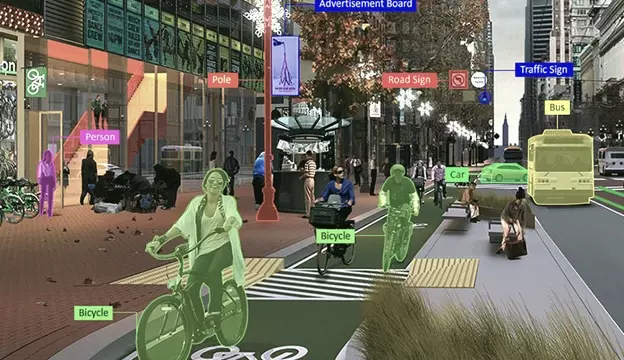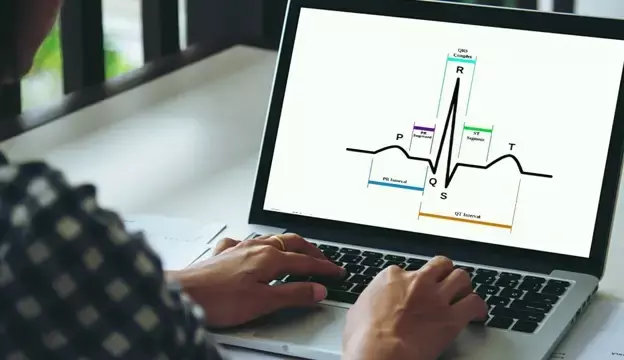Training Data for Computer Vision
A vast amount of computer vision training data is required for developing AI models that can detect, identify, classify, and track various objects. We train data to enable machines to think, see, observe, and understand.
We also automate monitoring & surveillance applications to sense, analyze, and interpret digital images, videos, and other visual inputs for making appropriate recommendations or actions.

Our Solutions
We empower world’s-leading large language models (LLMs) and Gen AI models with an ethical and human-driven approach for RLHF, data generation, model evaluation, and safety.
Why Choose Us for Your LiDAR Annotation Services
Annotation of LiDAR data can be a challenging task due to the low resolution and complex annotation process involved. We are your ideal partner as:
Specialize
We specialize in validating labels, identifying issues, and labeling data so that it functions well with your machine learning models.
Labeling
We can label any type of LiDAR generated data by using right tools and techniques. We can quickly label objects on the move using ML training models.
One-click Annotation
We can enable one-click annotation of 3D objects using a fully customizable labeling process.
Expertise
We are experts in point cloud data, 3D object tracking with 2D mapping, semantic segmentation annotation for AI training applications.
Types of LiDAR Annotation Tools

Image Annotation
We use image annotation to train, validate, and test machine learning algorithms with well-processed training data.

Video Annotation
We help you launch your AI projects successfully with well-refined video training data (frame-by-frame) that is accurately annotated & labeled.

3D Point Cloud Annotation
We accelerate AI integration into machine learning models with high-quality data labeling.

AI Assisted Labeling
We help expedite your AI projects with a robust semi-automated labeling approach that facilitates annotators with enhanced time and effort.

ML Model Validation
We make your AI project successful with ML model validation techniques which check, validate, and rectify errors to fine-tune datasets thoroughly.

Realtime Annotation Workflows
We use concurrent labeling task distribution and queue system in the loop with production applications.

Last Mile Automation
We use AI in drones or robots to automate your last-mile operations to ensure your customers receive their products on time and in excellent condition.

Time Series Data Labeling
We expedite AI machinery and production operations like fault detection and usage-based pricing with the help of real-time analytics.
3D Point Cloud Annotation Use Cases

OBJECT DETECTION AND RECOGNITION
Self-driving cars use this for recognizing and categorizing things like road signs or traffic signals, constructing 3D maps, and estimating motion. It plays a significant role in making self-driving cars a reality. These cars make use of sensors and cameras for collecting data about its environment, analyzing it, and responding appropriately.

IMAGE PROCESSING AND EDITING
This makes use of image processing techniques for stimulating vision on a human scale. For example, this technique can be used if the objective is to enhance the image for use in the future. However, it is called computer vision as its aim is to recognize objects which might include detecting an anomaly in the automatic driving system.

FACIAL RECOGNITION
This involves using neural networks for detecting human face landmarks and to separate faces from other objects in an image. While computer vision is being implemented in face detection, neural networks are trained specifically for detecting human face landmarks separating faces from other objects in the image.

MEDICAL IMAGING
The healthcare industry utilizes of AI technologies for assisting doctors and nurses in a reliable manner. Advancements allow it to become an accurate source for usage in healthcare applications.

VIDEO SURVEILLANCE
Since CCTV cameras are merely passive units, they assist in solving incidents, however, they are not effective in proactive prevention. AI and ML are instrumental in improving these cameras through a vast array of features which address recurrent issues with security.

ROBOTICS
Robotic vision comprises of algorithms, cameras, and other hardware which assist robots in developing visual insights. It permits machines in carrying out complicated visual tasks like robot arm which is programmed for picking up an object that’s placed on a board.

AUGMENTED REALITY
Augmented reality and virtual reality make use of computer vision for identifying and detecting real world objects and integrating virtual content on to them. This is called object detection and is a critical part of creating real and immersive AR experiences.

DRONES
Monitoring of scene and environment using drones is a critical aspect of agricultural change. Farmers can utilize visual data taken using drone cameras and process them for remote monitoring of crops, livestock, collect information relating to field topography and also soil composition.

RETAIL AND ADVERTISING
Computer vision is used in retail during self-checkout to analyze consumer interactions and tracking movement of goods, automatic replenishment for acquisition of picture data and carrying out an inventory scan by tracking objects on shelves at a fast pace, intelligent video analytics, and much more.
Coral Mountain Data
Office
- Group 3, Cua Lap, Duong To, Phu Quoc, Kien Giang, Vietnam
- (+84) 39 652 6078
- info@coralmountaindata.com
Data Factory
- An Thoi, Phu Quoc, Vietnam
- Vung Bau, Phu Quoc, Vietnam

Copyright © 2024 Coral Mountain Data. All rights reserved.
